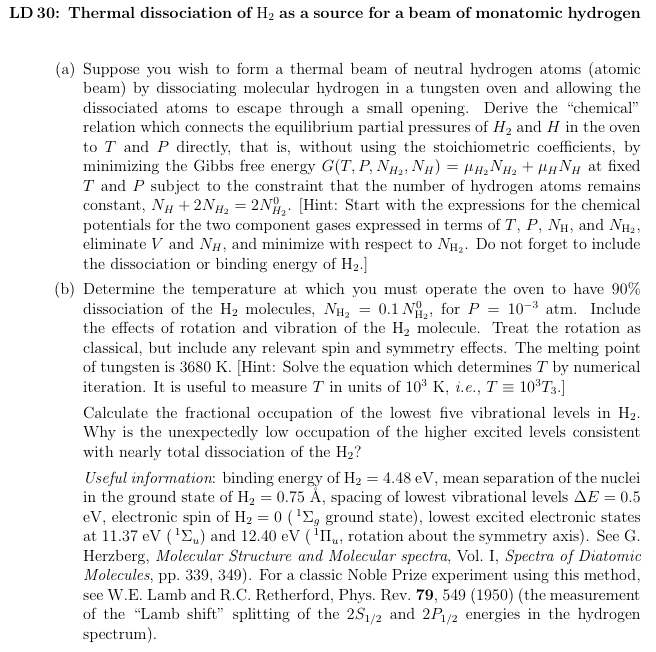
PROBLEM SET 9
Due Friday, April 7, 2006
HOUR EXAM IN CLASS WEDNESDAY, APRIL 12, 2006, UNIT 2
Reading: Landau and Lifshitz, Secs. 53-57, 85-88, 94

| Comment:
This problem introduces a new way of looking at defects in solids, the treatment of "holes" (missing atoms at normal lattice sites) and
"interstitials" as independent excitations of the normal lattice. The
numbers of holes and interstitials must be equal, precisely so in a
microcanonical or canonical treatment, but only equal on the average if
we consider the grand canonical distribution. Since the results of all
three treatments are the same for large systems
with small fluctuations in the relevant quantities, we can use the grand
partition functions for the holes and interstitials considered separately,
and only insist on equilibrium between the two phases in determining
n and m. Descriptions of this sort are common, e.g., current
transport by holes in a doped semiconductor.
Note that the specific heat CX is related to the energy fluctuations through the fluctuation-dissipation theorem. See LD7(c). What can you conclude about the physical equivalence of the canonical and grand canonical distributions knowing CX? |

| Comment:
In part (a), you will show that the equilibrium conditions follow
from the additive conservation laws. The "chemical" conditions in terms
of the stoichiometric coefficients for the reaction deal only with the
ratios of species in the reaction, and not directly with the
conservation laws.
The operating temperature in part (b) is fairly close to the melting point of tungsten. This method clearly fails as a way of producing atomic beams for molecules significantly more tightly bound than H2. |

| Comment: The virial expansion is good at low densities, so the degeneracy of the gas is small, and the corrections are defined relative to the classical limit. Recall that PV = - kT lnZ. The problem is to find the fugacity z as a series in the number density, and then to make a consistent expansion of the relation above. Recall that z is small in the classical limit, and make appropriate expansions of the Fermi-Dirac and Bose-Einstein distribution functions which exploit this observation. |